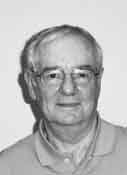 | John Rawson, Consultant, is part of the team of Wichita sales staff and RF radio technicians that is grouped with shops located in Lincoln and Omaha, Nebraska. FirstWireless, Inc. offers client consultations and demos, service, maintenance and installation, radio rentals, FCC licensing, GPS tracking and warranty administration. FirstWireless, Inc. specializes in the sales, service and rental of two-way radios, accessories and applications.
As a Premier Service Partner with Motorola, the trained sales staff and radio technicians keep customers up-to-date with the most current technical advances in radio systems and devices. Visit www.firstwirelessinc.com for more information or call at (316) 265-2290. |
Electronics
2010-09-01 13:38:00
Digital future for professional two-way radio - part 3 in series
Question: Why Two-Way radios?
Answer: By migrating from analog to digital two-way radio communications, the communication needs of many organizations can have a strong technical foundation for adding new functionality to meet new needs in the future. Let’s explore how digital radio technology can support a more responsive and adept mobile team.
Need: Efficient Use of RF Spectrum
For many two-way users, the most important benefit of digital radio is to make more efficient use of licensed 25 kHz and 12.5 kHz channels. The airwaves are becoming more and more crowded, and the old licensed channel structures — originally designed with the principal goal of serving a handful of broadcasters — are no longer adequate to carry the increasing broadcast and private radio traffic projected in the future.
Regulatory agencies are responding to an impending crisis in RF congestion by mandating more efficient use of licensed spectrum. For example, in the U.S., the FCC is requiring manufacturers to offer only devices that operate within 12.5 kHz channels by 2011. By the year 2013, all users will be required to operate in 12.5 kHz — making it possible for twice as many users to share the airwaves as compared with today’s 25 kHz licenses.
The next logical step is to further improve the effective capacity of 12.5 kHz channels. It’s only a matter of time before the ability to carry two voice paths into a single 12.5 kHz channel, also known as 6.25 kHz equivalent efficiency, becomes a requirement. But with digital radio, there’s no need to wait for a mandate. Devices that incorporate Time-Division Multiple Access (TDMA) can achieve 6.25 kHz equivalency today — doubling the capacity of a currently licensed 12.5 kHz channel or quadrupling the capacity of a 25 kHz channel.
That means many more people can communicate over an enterprise’s existing licensed channels, without worrying about interference. And because each TDMA “slot” works independently, these virtual 6.25 kHz channels can be used flexibly according to the organization’s needs. For example, two slots within one channel can be used to carry two separate and private conversations, or one slot could be used for data or priority signaling in conjunction with a conversation on the other slot.
As application designers create new ways to use the additional capacity — for example, combining channels to support full-duplex calling or to increase the data rate — TDMA-based digital devices will be ready to adapt. In fact, well-designed digital radios can adapt to changing usage models on the fly, in the field. And even organizations that need only basic calling capabilities can benefit from the increased capacity of TDMA-based radios by getting two-for-one value for infrastructure such as repeaters and antennas.
Digital radio offers:
The ability to expand digital voice, data, and control capabilities that can be delivered over a given slice of RF spectrum. By choosing devices that incorporate the appropriate standards and technologies, organizations can get increased capacity and flexibility to support more users and new usage models. For example, devices that use TDMA modulation offer the flexibility to use a single channel for multiple two-way voice conversations, full-duplex conversations, separate voice and data transmissions, control and management capabilities, and more — flexibly switching between usage scenarios as needed.
Lower licensing and equipment costs. 6.25 kHz-equivalent systems based on TDMA enable two virtual channels within a single 12.5 kHz licensed channel, providing twice the calling capacity for the price of one license. And because there’s still only one “real” channel, any supporting infrastructure does double-duty as well. A second call doesn’t require a second repeater, or expensive combining equipment to route both calls through a single antenna site.
Next month we’ll take a look at the need for Improved Fundamentals, Including Voice Quality, Privacy, Battery Life, and Additional Features.
*Information obtained from “The Future of Professional Two-way Radio: Digital” whitepaper by Motorola. Email us at sales@firstwirelessinc.com for the complete paper delivered as a pdf file.


